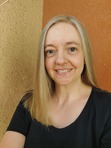Jessica Knauss's Blog, page 56
December 12, 2011
Harvesting Between the Lines: On Researching Historical Novels
Evan Ostryzniuk is the author of the English Free Company series, the first book of which, Of Faith and Fidelity, has just been released by Knox Robinson Publishing and is available wherever fine books are sold. I've been reading Of Faith and Fidelity and admired the way Evan is able to put the reader immediately into the sensory experience of his chosen time period. I recently had the opportunity to ask him how he achieves such a wonderful effect and what his historical research methods are like. This is his response.
Solid research is the foundation of any respectable historical fiction. That much is obvious, but the blessing and curse of the digital age is the sheer enormity of material easily available for review. It is a blessing because the author can delve far deeper into the period milieu than his predecessors, and therefore is given the opportunity to produce a historically rich text larded with myriad detail; it is a curse not only because of the time required to go through the thousands of pages and hundreds of images related to the topic at hand, but also because with the greater information at the author's fingertips come higher expectations from the readership. Convenient anachronisms or inventions are much harder to get away with now. Therefore, as an author I have to strike a balance between extensive research and pedantry, or archival tourism. The novel has to be written some time! So, I have developed a number of strategies to cope with this challenge, which at heart means that I have to be picky. To use a fishing analogy: I cast wide into the vast ocean of information, but my net is woven to catch specific species of fish.
One research strategy I employ is to define my approach from the central theme I want to develop in my novel. While the English Free Company series has a set stable of characters and takes place within a restricted period (usually less than a year), each novel has as a uniting thread a specific idea built within the context of the time. For example, Of Faith and Fidelity considers the meanings and challenges of… well, you get the point. Therefore, I direct my research towards drawing out aspects of that theme from my study of the more concrete and banal needs of the plot. Not surprisingly, I use Chaucer as a primary source, and so when I study the "Knight's Tale," for example, I look for direct and indirect references to notions of faith and fidelity, whether in his conversation with the other pilgrims, in his gestures, or in the tale he tells. Of course, I have to be convinced that Chaucer was employing contemporary cultural norms in his writing, however exaggerated, otherwise I might embarrass myself in my own writing, but subsequent research confirms his sincerity. When I take the theme for my next novel, I will read the "Knight's Tale" again, bit with a view to a different set of needs.
My novels are character-driven above all, since because the events depicted in the narrative are historically true, there is a degree of inevitability about how some of the plot plays out. Therefore, my intention is not to offer a textbook discussion of the era, which Wikipedia handles just fine, but to draw the reader in through more personal details, including dialog, gestures, movements, carriage and disposition, acts of violence or courtesy, that are specific to the time and place of my novels. This leads me to a second research strategy. While some aspects of human intercourse and custom remain universal – everybody eats, for example – time and place are evoked by describing how and what they ate, and no less importantly the social, political and symbolic meanings of the meal. I am not interested in writing long-winded passages about medieval fortification or crofters' huts for the sake of placing the reader in the novel's time and place. For me, the reader can simply download a photo of one or the other and glance at it when need be as they read my novel. Above all, I want to bring the people to life and encourage the reader to engage with them, and to do that I need to develop many angles of the characters and lard the text with precise but flowing interactions. That requires an immense volume of research because it requires me to pick up on the small almost trivial aspects of primary sources, which is every writer's dream resource. I will read Chaucer, Gower, Froissart, Langland, or Boccaccio as much for their casual deployment of everyday customs as for their deeper abstract themes and lanThe pretentious response to the reason why I am attracted to the late-14th and early 15th centuries is to claim "the Renaissance" and let that word speak for itself. However, the truth is that below and beyond the earliest murmurings of Humanism and innovations in literature and business are other events so historically important, diverse and fascinating yet bunched together chronologically that it arouses the curiosity about how this could be. This period offers the Great Schism in the Church, Black Death, Hundred Years War, Turkish expansion, final flowering of chivalry and courtly love, commercialization of warfare, all of which throw up their own diverse stories. Even more attractive to me, as someone who lavishes most of his attention on characters, is that this period is intensely personal. What I mean by that is that this was a time when personalities on many levels were paramount, and their interaction extremely sophisticated. And I don't just mean kings and queens and nobility, whose personalities are key in every age. The period 1350-1450, especially in northern Italy, saw the rise of famous captains, famous merchants, famous bankers, famous artists, famous lords… In other words men and some women of all but the humblest classes became individuals, as opposed to simply serving as members of a well-defined order. That is one important aspect that I develop in the English Free Company series. Another attraction of the period is the paucity of historical fiction related to those years. Much has appeared about the era of Machiavelli and the Borgias, on the one side of the divide, and the time of Eleanor of Aquitaine on the other, but not a whole lot of stories have appeared on the years in between. This neglect surprises me, as well as offers me an opportunity to show my fellow authors and readers what they have been missing!
Published on December 12, 2011 00:12
December 7, 2011
Family History into Historical Fiction: Karen Charlton
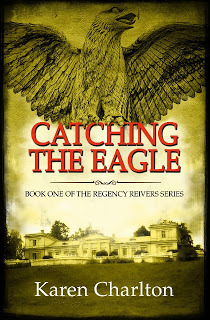 Tomorrow, December eighth, is the debut of Karen Charlton's Catching the Eagle, a regency mystery and adventure made all the more thrilling because it's based on a true story.
Tomorrow, December eighth, is the debut of Karen Charlton's Catching the Eagle, a regency mystery and adventure made all the more thrilling because it's based on a true story. Easter Monday, 1809: Kirkley Hall manor house is mysteriously burgled. When suspicion falls on Jamie Charlton, he and his family face a desperate battle to save him from the gallows. When £1,157 rent money is stolen from Kirkley Hall, it is the biggest
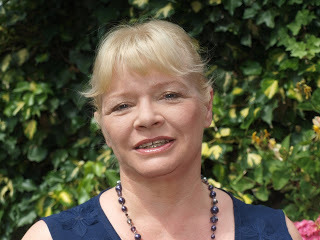 Today I'm thrilled to have Karen Charlton with me to talk about her new book. As some of you know, I spent a year in Leeds, England, so today it's a couple of Yorkshire lasses sharing a cuppa. Karen Charlton was born in Sheffield and grew up in Leeds. She completed an English degree at Hull University. After a few years of roaming between various jobs in Harrogate, Ripon and Scarborough she finally settled in Teesside. She completed a post graduate teaching certificate at Durham University. Since then, she has combined a teaching job at Grangefield Secondary School in Stockton, with her writing and raising her own pair of "little villains."
Today I'm thrilled to have Karen Charlton with me to talk about her new book. As some of you know, I spent a year in Leeds, England, so today it's a couple of Yorkshire lasses sharing a cuppa. Karen Charlton was born in Sheffield and grew up in Leeds. She completed an English degree at Hull University. After a few years of roaming between various jobs in Harrogate, Ripon and Scarborough she finally settled in Teesside. She completed a post graduate teaching certificate at Durham University. Since then, she has combined a teaching job at Grangefield Secondary School in Stockton, with her writing and raising her own pair of "little villains."JK: What drew you to the Regency era?
KC: Quite simply, I didn't: it chose me. Catching the Eagle is based on the true story of my husband's ancestor, Jamie (James) Charlton, who managed to get himself convicted for Northumberland's biggest robbery back in 1809. On Easter Monday of that year, over £1,157 of rent money collected from the estate was stolen from the steward's office at Kirkley Hall in Ponteland, England. The thief had left no visible trace of himself and the furious owner of Kirkley Hall sought help from Detective Stephen Lavender, a principal officer with the Bow Street magistrate's court in London. However, when Jamie was eventually arrested and charged with the crime, the main evidence against him came from a fellow prisoner in Morpeth gaol, William Taylerson. This treacherous cad claimed that Jamie had confessed to him that he had "done it" while they shared a cell together. Taylerson (who had previously been sentenced to hang) was granted a pardon the week before the trial and freed.
JK: How did this saga come to light?
KC: We stumbled across this fascinating tale while researching our family history. When we shook our family tree – a convict fell out. Not only that, but Jamie was a convict with a very dodgy conviction. There was a public outcry after he was found guilty and a subscription was set up to help him and his family. It did not take me long to realize that the perfect plot for a historical novel had just landed in my lap.
JK: Did you have to do much work to fill in the gaps?
KC: Genealogical research – which had previously been a hobby - now became a quest. We took several trips down to The National Archives in London and found the transcripts and statements from the original court case notes. We also discovered that the robbery and subsequent court case had been well reported in the local newspaper of the time: The Newcastle Courant. Every copy of this newspaper was available to read in Gateshead Library in its original form. The Ponteland Local History Society was also able to provide me a very informative pamphlet written about the robbery in 1890.
JK: Did all this fact-finding change your perception of the era?
KC: I had always wanted to write historical novels and I particularly loved the Regency era. There is something very attractive about this time period with its white muslin dresses, highwaymen, dashing scarlet uniforms and an intriguing whiff of decadence and scandal. However, Catching the Eagle turned out to be a very different kind of Regency novel. My main characters are the ordinary, everyday folks of rural England. They are JK: After you finished your research, did the novel come along quickly?
KC: It was not easy and I found it a mammoth undertaking. Catching the Eagle covers events from April 1809 until June 1811. It contains over seventy characters and involved recreating the lost world of rural Northern England.
JK: How did you keep it all straight?
KC: Fortunately, I had a wealth of original documents which gave me tantalizing glimpses about how the characters lived their lives. From the court case notes, I discovered what agricultural laborers actually did for a living, how much they were paid, and what they did in their spare time. I learnt about the brandy they drank in the taverns, what they talked about amongst themselves while they were there and the gambling and dice games they enjoyed in the public houses. I discovered the extent of the debts they ran up during the hardship of a bad winter and the kind of shops they had. I know how much they were prepared to pay for a new cow, or a new coat, and how much reward they were prepared to offer if one of their highly-prized sheep dogs went missing. All of this detail I have tried to include in Catching the Eagle because I believe that it is detail like this which brings the period and the setting to life for the reader. I always want a novel to take me somewhere different, somewhere I have not traveled before either geographically, socially or historically.
JK: Did you find it difficult to create convincing historical dialogue?
KC: Much of the dialogue in the novel is also lifted directly out of the archives – those conversations really happened; those words were actually spoken. This is especially true of the three chapters set in the court room and many of the scenes set in local taverns. Jamie's drunkenness and foolishness in the Seven Stars public house in Ponteland on the night after the robbery was reported by several witnesses in the court case notes. Everything he said that night was reported verbatim – and is recreated in Chapter Two in the novel. All the statements given by the witnesses at both trials are recreated virtually word for word in later parts of the book.
JK: Do you think you'll continue writing novels?
KC: It has taken me years to realize my ambition and become a published novelist. Catching the Eagle was a labor of love which took five years to research and another twenty-six months to write and revise. Fortunately, our research uncovered enough material for two more novels and Catching the Eagle is the first in The Regency Reivers Series.
JK: Thank you for being here today. Do you have a message for my readers?
KC: If I have one piece of advice for would-be novelists it is this: don't give up – hold onto your dream.
Catching the Eagle is available from Knox Robinson Publishing and from booksellers everywhere December 8.
Published on December 07, 2011 10:45
December 5, 2011
The Long Road to Astreya: An Interview with Seymour Hamilton
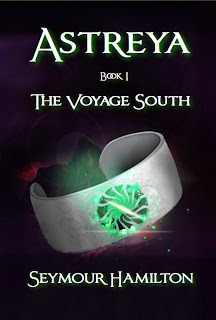 JK: Today I'm lucky to have with me Seymour Hamilton, author of the new Astreya Trilogy. My review of the first book is available here, and the second and third books will be released by Fireship Press this month and in January. The books are held together by some of the most original and authentic personalities I've ever read, so my first question is: how did you create the characters?
JK: Today I'm lucky to have with me Seymour Hamilton, author of the new Astreya Trilogy. My review of the first book is available here, and the second and third books will be released by Fireship Press this month and in January. The books are held together by some of the most original and authentic personalities I've ever read, so my first question is: how did you create the characters? SH: They showed up and demanded to get into the book. Once in, they often extended their initial role in unpremeditated and completely unauthorized directions, changed their names, had adventures and misadventures that showed that they were much more than mere plotting devices, and on occasion got left behind and had to be rescued.
JK: Were they hard to keep track of?
SH: Through most of the writing process, I had to call the roll chapter by chapter from a separate sheet of paper on which I kept track of who was where in order to preserve them from the literary oblivion of the man who got into the ship/boat/inn/burning building etc., and never got out again. Sometimes they explained themselves to each other, which was very helpful to me in that I was able to listen in. These revelations also helped me figure out what they were doing before, during and after their appearances in Astreya's story. A few of them kept secrets from me and everyone else, some of which were revealed later when another character unexpectedly spilled the beans. More than one remained inscrutable to the end of the third book.
JK: So they really took on a life of their own. Are any of them based on people you know?
SH: Sarah [a character from Astreya, Book III: The Wanderer's Curse], to my surprise, physically resembles my maternal grandmother, perhaps because they share the same name.
Mirak's [from Book II and Book III] origin is two or three instructor petty officers who taught me how to march, do arms drill, and steer a whaler. I was 16, and was spending a year in London, attending a school called Haberdasher's Aske's Hampstead School, where the school uniform was black three-button jacket, black pin-stripe trousers, black waistcoat, white shirt, diagonally striped tie, and black cricket cap with school crest. One of the petty officers, the one who taught sailing, said the wonderful words that I put in Gar's mouth: "Great smoking rope-ends!" I couldn't make this up. Any similarities to other family members, friends or characters in other people's books exist solely in the mind of the reader. If it were not so, I'm sure they would have told me.

JK: Did the Astreya books require a lot of research?
SH: Not really. I just made it up as I went along, based on having lived to 70.
JK: How long have you wanted to write this story?
SH: In 1946, when I was five, my father read Coleridge's Rime of the Ancient Mariner to me out loud. At the time, I thought it was autobiographical. My father was a bearded master mariner who had spent the six years of World War II in the British Navy. I was conceived during the brief shore leave between his first command, a corvette in the Mediterranean and his second, a frigate in The Battle of the Atlantic. Before he died at 99 and three months, he read a first version of Astreya, and called it, "A good yarn, once you get rid of the bit where your hero biffs someone over the head with that novelist's weapon, a belaying pin."
JK: Ah, a father's approval! What other influences led to Astreya?
SH: When I was fifteen, I thought that the best thing a person could do would be to write a book that would be enjoyed by people who had read what I had read. At that time, my list of authors included Arthur Ransome, Rudyard Kipling, Robert Louis Stevenson, C.S. Forester, Captain Marryatt, and Captain Joshua Slocum -- all of them men who wrote about the sea and sailing ships. When I was 30, I wrote a PhD thesis on science fiction. My then-current list of authors included Ursula Le Guin, Marion Zimmer Bradley, Ray Bradbury and Robert Heinlein. The degree essentially made me unemployable at any university where I could imagine myself teaching. So I became a contract writer and part time civil servant for a decade, after which I reinvented myself as a professor of communication studies for a few years. Then I went back to editing/writing. In twenty years, I had written for more than 25 government departments and agencies, plus a few private sector companies. The best moment of my writing-on-contract years was the day a bureaucrat looked over the first draft of a document I had prepared for him about the inconsequential doings of his small section of a government department. He looked at me with a worried frown and said, "This is indeed what we do. You have made it clear, very clear. Could you take it away and... er... fuzzy it up?"
JK: That's funny, in a just-shoot-me-now kind of way. How did you escape that environment?

SH: In the 1970s, I escaped the daily grind for a few days and sailed as mate on a traditional 50-foot wooden schooner from Nova Scotia to Grey River on the south coast of Newfoundland. The coastline is a wall of cliffs that fall hundreds of feet into the sea. Had it not been for a flashing light on a navigation buoy, the entrance to our destination would have been invisible. Inside the narrow passage between the cliffs was a fjord that widened into several high-sided bays and inlets, on the least steep of which was a tiny community. We met with children picking cloudberries, which are like big, white blueberries, and found that we could barely communicate, so strong were their accents. Apart from the one or two summer visits from a supply ship, we were their first visitors in longer than the children knew. From this experience grew the opening lines of Astreya.
JK: I can see exactly how that place would inspire Astreya's Village. Did the rest of the book follow as quickly?
SH: The first version won an unpublished novel award in a competition sponsored by the Nova Scotia government. I never asked how many competitors there were, out of fear that I was the only one. The prize was to have my hand shaken by Farley Mowatt, who was wearing his kilt. A short-lived literary magazine published the first chapter, and then reality emerged in the form of rejection letters telling me that the story needed work.
JK: But you didn't give up.
SH: The vicissitudes of life forced Astreya into a cardboard box in the basement, from which it emerged in the 80's to be painstakingly transcribed from typescript to electronic copy. Over the next decade or so, the story only saw the light when it was being converted from Mac Classic to Word Perfect 5, to Word 2.0, and finally to Pages. Nonetheless, it grew fitfully, taking twists and turns into places it should never have gone. These short returns to Astreya's world were escapist moments as I plied the trade of writer/editor and sometime teacher of first year Business English.
JK: How did it finally get out of the drawer? When did it become a trilogy?
SH: In 2005, I retired, and while my wife Katherine soldiered on, I went back to Astreya. This time, I seemed to know where I was going at least day by day, and sometimes even chapter by chapter. A total rewrite of Book I led me on into Book II, and then a third book became necessary to bring the story to a conclusion. Then there was tweaking: making the hints and nudges in Book I a bit clearer, attending to consistencies of time, place, distance and characters who perversely refused to accept their original names.
JK: That's another sign of strong characters. At least they let you finish the story eventually. How did Astreya come to be published?
SH: Five years later, I was pretty much done, so I went in search of an agent, because all the writers' help-and-advice books, articles and web sites told me that this step is essential. Many emails later, an agent showed interest, talked Astreya up to a couple of Canadian publishers, one of which wanted to see more than a sample chapter. However, after a few weeks, they passed on the story, commended me with some polite and encouraging words, and then rabbited on about the state of the publishing industry and the international economy, as if I hadn't noticed. A week later, the agent quit on me. Since we had never signed a contract, I had to accept a pat on the head and wishes of good luck. Apparently, the agent gave up on Astreya because of the pressure involved in cleaning up the mess left after a publishing house had succumbed to the aforesaid economic winds of change. So I was back to square one. I read somewhere that Christopher Little, J.K. Rowling's agent, was a keen sailor and yachtsman, so I crafted an appropriate email, attached the first chapter of Astreya, and sent it off into the trackless electronic cloud. I imagined that I might get a curt note from a flunky who was helping manage somewhat more money than the Gross Domestic Product of a medium sized country. (I later discovered that Little was no longer Rowling's agent.) Nonetheless, I received a polite reply, referring me to Astrodene's Historic Naval Fiction, a compendium of information and books related to the British enthusiasm for books about the days of sail in the Royal Navy -- a literary industry best known for C.S. Forester's Hornblower novels. Probably noticing that I am Canadian, not British, and that Astreya is neither because he inhabits an alternate 18th century world that has similarities to Newfoundland, these splendid people promptly wrote back to refer me to Fireship Press, located in Tucson, Arizona, which is a long, dry distance from the sea, but which nonetheless publishes books about the days of sail, many books dealing with American themes and figures. I went to www.fireshippress.com, where I read Tom Grundner's straight-talking statement of how he works, together with the following: "Fireship Press does almost everything electronically so, if you need to reach us, first try: info@FireshipPress.com. If all else fails, try: [the phone]." When I discovered this forward-looking fact, I took hope, since I had just been reading the website of a publisher of fantasy and science fiction which, amazingly, requires paper submissions via snail mail, demands that any material be sent to them alone, and advises that their turnaround time is six months. The senior editor of Fireship, Tom Grundner, himself the author of three nautical novels about Sir Sidney Smith, a real person who lived at the time of the American Revolution, read the first chapter of Astreya and replied in a couple of weeks. He liked it so much that he predicted good things as soon as he had a second opinion from someone who had read all of Book I. Two further of weeks of waiting later, Astreya was welcomed aboard Fireship, and the task of a final edit began. With your invaluable editorial help, we made the deadline of only two months necessary for the first book of The Astreya Trilogy to be published in time for Christmas. Tragically, I never met my new friend, because Tom died only three months after he had chosen to publish Astreya. His colleagues at Fireship nonetheless decided to continue the project, for which I will always be grateful.
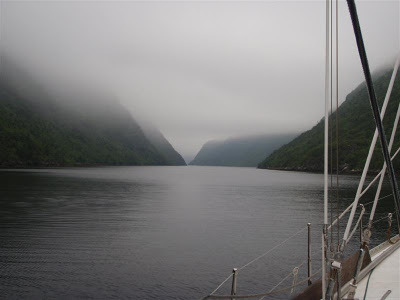
JK: Talk about vicissitudes. I find your story very inspiring, a "Never Give Up!" for writers who hear the call to write and have been working at it (and probably a lot of other things) for a long time.
Thank you so much for stopping by my blog. Would you like to leave my readers with any of the wisdom you've gathered along the way?
SH: Here are thirteen things of which I am sure, because most of them I learned the hard way. Don't let anyone tell what to write -- unless they have a stake in what you're writing. I have encountered people who thought that they had great ideas for a story that they wanted me to write for them. They were just too busy to do the boring simple part, I guess.Avoid people who offer to jump start your creative imagination if you purchase their course, workshop or personal coaching that features a special secret blend of psychobabble snake oil. Never read anything that contains the words "writer's block." Do not go near groups or websites or chat rooms populated by unpublished writers, where you will find eager folk swapping ignorance and undermining each other with sycophantic faint praise.Don't waste time with people who say things like, "Why don't you write like Elmore Leonard, or Stephen King? It can't be all that hard, because they write in short sentences and make a lot of money."Do listen to your son or daughter when they tell you that you put six people on a boat, and then took seven off, or that your hero's eyes were green in chapter one, and blue in chapter six.Do listen to an editor who is receiving money from a publisher who is investing money in making your manuscript into a book. Do learn the craft of storytelling by reading and re-reading and studying books that you admire, but not when you're actually on a writing roll, or you may find that you have unconsciously plagiarized. (I spent happy hours writing a wonderful sequence which I later realized was a distorted echo of a chapter by Rudyard Kipling.)Marry someone who can put up with a very selfish person who likes to scamper around in his or her own obsessive little mind, alternately chuckling with glee and moaning in despair, and calling this anti-social behavior "working."Don't get three degrees in English Literature, because you will start to put the critical cart in front of the creative horse. My mistake. It took me far too long to discover that most academics and many critics have the highest regard for writing that they can talk about. Accordingly, they value hard-to-read books like Faulkner's The Sound and the Fury, or James Joyce's Ulysses, both of which I never finished. Most readers value writing that they understand and enjoy. Consequently, they are people like me, who like to revisit Middle Earth, or fly with Harry in a game of Quidditch, or listen to the salty words of Long John Silver.Corollary to 10. If you want to tell stories, avoid professors in departments of English who write slim, sensitive novels that scuba-dive into the salty seas of self-analysis, self-discovery and self-justification, and who use the word "empower" a lot. Such people usually aren't interested in plot, which to a story-teller sounds a bit like a musician who doesn't like tunes.Blogging, website maintenance and corresponding with fans all get in the way of real writing, which is finishing your book. Choose carefully what you do with your time.Write now. Don't wait until you're 70 to finish your book. You may not find a publisher like Tom Grundner in time. Who needs posthumous publication?
Published on December 05, 2011 00:09
December 4, 2011
SSS: Method in the Madness?
Continuing in Tree/House where we left off last week...
* * *
"Viola, I've given up that life. Take your dirty games to some cesspool.""My dirty games? 'False face must hide what false heart doth know'!"The two were mere centimeters away from each other now, each more insistent on standing his or her ground than the other, and Emma watched, her eyes wide, as Franklin towered threateningly a full foot above Viola, and while she kept her eyes fixed on his, craning her neck. She said steadily, "Though this be madness, Emma, yet there is method in it."
* * *Who is this Viola? Who, indeed?
Tree/House is available here, here, and here. Request it for your library!
Thank you very much for your comments. If I can find your blog, I always reciprocate. Please see all the great excerpts at www.sixsunday.com.
* * *
"Viola, I've given up that life. Take your dirty games to some cesspool.""My dirty games? 'False face must hide what false heart doth know'!"The two were mere centimeters away from each other now, each more insistent on standing his or her ground than the other, and Emma watched, her eyes wide, as Franklin towered threateningly a full foot above Viola, and while she kept her eyes fixed on his, craning her neck. She said steadily, "Though this be madness, Emma, yet there is method in it."
* * *Who is this Viola? Who, indeed?
Tree/House is available here, here, and here. Request it for your library!
Thank you very much for your comments. If I can find your blog, I always reciprocate. Please see all the great excerpts at www.sixsunday.com.
Published on December 04, 2011 00:13
December 2, 2011
An Imaginative Tale: Astreya, Book I, The Voyage South
 When I first started reading Astreya, it drew me into its world in a way no other book ever has. Astreya is a fantasy, but its world is much closer to us in the US and Canada than the typical fantasy fare of European-folklore-inspired vampires or werewolves, or princesses and fairies. Author Seymour Hamilton has achieved a tale that is simultaneously magical and convincingly real.
When I first started reading Astreya, it drew me into its world in a way no other book ever has. Astreya is a fantasy, but its world is much closer to us in the US and Canada than the typical fantasy fare of European-folklore-inspired vampires or werewolves, or princesses and fairies. Author Seymour Hamilton has achieved a tale that is simultaneously magical and convincingly real.The only evidence Astreya has of his father are a puzzling notebook and an upper-arm bracelet that begins to glow only when he puts it on. He leaves his isolated fishing village in hopes of finding out more about his father, and finds evidence of horror, people who betray and enslave him, and, finally, the best friends he's ever had. The chapters Astreya spends learning how to paint with Gar and Lindey are especially delicious for readers who feast on the feeling that they know the fictional characters they're reading about even better than their own friends. The book ends on a masterful cliffhanger. Warning: If you read this book, you will not be able to avoid Book II: The Men of the Sea.
What I most loved about the story was that it didn't follow a preconceived plot outline we've all read hundreds of times, but flowed naturally from the motives of down-to-earth, psychologically complex characters even as universal themes like the journey and the apprenticeship develop. Astreya's adventures are only as far-fetched as real life. Real life with magical glowing stones, that is.
Lindey is the best female heroine I've read over this past decade. She's tough, capable, and beautiful, but also full of secrets. She has a refreshing pragmatism and logic rules almost everything she does. These are two valuable traits for a heroine that we still don't see very often. She takes girl power to a highly attractive place for both male and female readers.
Additionally, Astreya has plenty of characters you'll love to hate: spoiled bully Yan, slavedriver Jeb, and stab-happy academic thug Carl. With sea voyages, artistic leanings, fist and knife fights, fence building, adolescent confusion, wisdom, danger, and love, Astreya I: The Voyage South is going on my list of the best books of the year.
Astreya, Book I: The Voyage South is now available in Kindle, Nook and other ebooks, iTunes, and your customary fine paperback booksellers.
Tune in Monday for a fascinating interview with the author.
Published on December 02, 2011 01:08
December 1, 2011
NaNoWriMo Update: Where I am with The Seven Noble Knights of Lara
As I learned after making a goal of 25,000 new words on a novel I'd already more than started, I was a NaNo Rebel this year. The only time I tried to do NaNoWriMo officially, I failed miserably. But being a rebel seems to help: a few days ago, I met my goal of where I wanted to be in the story! (It turned out to be the end of Chapter 12.) Yesterday, the very last allowable day, I finished Chapter 13 and started Chapter 14 and surpassed my word count goal (just barely).
The first draft (maybe technically second, since this is the same book I started for the official first NaNo) of The Seven Noble Knights of Lara now stands at 50,960 words, 25,061 of which emerged out of my laptop during the month of November 2011. I'd say I'm three quarters of the way through the plot, and since I'm not prolix, especially in the first draft, a lot of details need to be added, so it may end up in the 100,000 word range, which is pretty astounding.
It's also been happening astoundingly slow. I started this draft in February 2011, so my average is only 5,000 a month. I've always believed I was a low-output writer, but only recently has that become less than acceptable to me. A few months ago, I wrote 9,000 words of my other project, "Middle Awash in Talent," over the course of two or three days (hard to remember specifics when so much creativity is coursing through you!), so I know it's possible. If I want anyone to read my completed SNKL before the end of the world next December, I had better get serious.
Here are some things I think will help me finish before the Mayan apocalypse:
1. Write every day. (This is tough when my job has become unbelievably demanding... but no excuses!)
2. Write a consistent amount every day.
3. When I run out of the plot I have sketched out, take the time to sketch out the end of the book in some detail.
4. Keep enjoying the writing as much as I did in November. Yep, even though I had work and holidays and ten million things to think about other than the psychology of Gonzalo González, sitting down to immerse myself in his (and his aunt and uncle's) world was pure pleasure.
Roni Loren, Rachel Aaron, Susan Kaye Quinn, and Zoe Winters seem to have had success with similar notions. This bodes very well, indeed!
The first draft (maybe technically second, since this is the same book I started for the official first NaNo) of The Seven Noble Knights of Lara now stands at 50,960 words, 25,061 of which emerged out of my laptop during the month of November 2011. I'd say I'm three quarters of the way through the plot, and since I'm not prolix, especially in the first draft, a lot of details need to be added, so it may end up in the 100,000 word range, which is pretty astounding.
It's also been happening astoundingly slow. I started this draft in February 2011, so my average is only 5,000 a month. I've always believed I was a low-output writer, but only recently has that become less than acceptable to me. A few months ago, I wrote 9,000 words of my other project, "Middle Awash in Talent," over the course of two or three days (hard to remember specifics when so much creativity is coursing through you!), so I know it's possible. If I want anyone to read my completed SNKL before the end of the world next December, I had better get serious.
Here are some things I think will help me finish before the Mayan apocalypse:
1. Write every day. (This is tough when my job has become unbelievably demanding... but no excuses!)
2. Write a consistent amount every day.
3. When I run out of the plot I have sketched out, take the time to sketch out the end of the book in some detail.
4. Keep enjoying the writing as much as I did in November. Yep, even though I had work and holidays and ten million things to think about other than the psychology of Gonzalo González, sitting down to immerse myself in his (and his aunt and uncle's) world was pure pleasure.
Roni Loren, Rachel Aaron, Susan Kaye Quinn, and Zoe Winters seem to have had success with similar notions. This bodes very well, indeed!
Published on December 01, 2011 00:08
November 27, 2011
SSS: Excellent Wretch
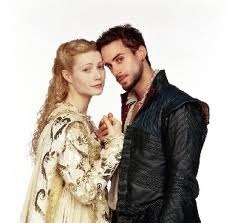 Thanks so much for the great feedback last week! To keep you excited for the big news I can't yet reveal about my Tree/House, these lines come just after last week's:
Thanks so much for the great feedback last week! To keep you excited for the big news I can't yet reveal about my Tree/House, these lines come just after last week's:* * *
The young woman laughed out loud. "What lines?"Franklin's grey face faded even further to white. "Viola!" he gasped. "'Excellent wretch!'""Also Othello, three: three, line 98," said Viola.
* * *
Six sentences is not a lot in this case! I hope you enjoy them, and all these other great sentences: www.sixsunday.com.
Published on November 27, 2011 00:11
November 23, 2011
SAVE A TURKEY: GOBBLE A BOOK BLOG HOP Winners
Thanks so much to everyone who participated in this last yummy hop! Winners have been notified and the printed books will be in the mail Friday (sorry for the terrible timing on that!).
Loyal follower Felicidad Dulcinea won first, and chose the amazing hardcover of The Time in Between by María Dueñas.
Awesome new follower Laura Henderson was drawn second, and she chose the engrossing paperback of Amy Hatvany's Best Kept Secret.
Supercool follower Mary Preston won third, and of all her choices, she got a Kindle version of Threads Woven by yours truly.
I hope you all enjoy your prizes as much as I enjoyed giving them. Stay tuned for more chances to win prizes in later blog hops. Happy Thanksgiving to all!
Loyal follower Felicidad Dulcinea won first, and chose the amazing hardcover of The Time in Between by María Dueñas.
Awesome new follower Laura Henderson was drawn second, and she chose the engrossing paperback of Amy Hatvany's Best Kept Secret.
Supercool follower Mary Preston won third, and of all her choices, she got a Kindle version of Threads Woven by yours truly.
I hope you all enjoy your prizes as much as I enjoyed giving them. Stay tuned for more chances to win prizes in later blog hops. Happy Thanksgiving to all!
Published on November 23, 2011 11:48
November 21, 2011
Review: The Jinx by D. F. Lamont
New author D. F. Lamont has a talent for action scenes that drew me right in to his science fiction YA tale, The Jinx. Stephen knows the exact moment his luck started turning bad because his bicycle is totaled in the first few pages. The accidents keep escalating in spectacular fashion until Stephen is in an auto accident in which his family members are seriously injured. Because he's come through with barely a scratch, Steven realizes all these bad things are happening because of him, so he runs away to protect his family. That's when things get really strange. When strange creatures stalk and attack the bus he's on, he knows he was right. Apparently rescued, Stephen awakes in a group of uniformed cult members who load him down with chaos theory with no regard to his science grade level. They clearly intend to use him in their sinister experiments, so he escapes with the help of Dedalus, a former cult member who teaches Stephen about his role in restoring balance to the universe with interesting machines and examples. The book culminates in a scene worthy of the biggest Hollywood blockbuster.
I was a little thrown off by the abrupt change between Stephen's basically normal though accident-prone world and the strange mountain he gets to by bus where the nasty creatures called Chaons pursue him with a mechanical relentlessness. But by the end of the story, I had read enough of the science to understand that even more random-seeming events are perfectly possible, even in our "normal" world. Stephen is a pleasant, everyboy character who leads us through a world in which anyone could believably become a hero.
The digital edition I received is bare-bones, with no cover, a small formatting error and a few type-o's. I'm willing to overlook that when I read for pleasure. If you're just looking for an exciting story with real science woven in expertly, then I highly recommend The Jinx.
The Jinx is available here in Kindle and paperback.
A reminder: The drawing for the Save a Turkey, Gobble a Book Blog Hop is tomorrow! Get those entries in for some truly amazing book prizes!
I was a little thrown off by the abrupt change between Stephen's basically normal though accident-prone world and the strange mountain he gets to by bus where the nasty creatures called Chaons pursue him with a mechanical relentlessness. But by the end of the story, I had read enough of the science to understand that even more random-seeming events are perfectly possible, even in our "normal" world. Stephen is a pleasant, everyboy character who leads us through a world in which anyone could believably become a hero.
The digital edition I received is bare-bones, with no cover, a small formatting error and a few type-o's. I'm willing to overlook that when I read for pleasure. If you're just looking for an exciting story with real science woven in expertly, then I highly recommend The Jinx.
The Jinx is available here in Kindle and paperback.
A reminder: The drawing for the Save a Turkey, Gobble a Book Blog Hop is tomorrow! Get those entries in for some truly amazing book prizes!
Published on November 21, 2011 01:17
November 20, 2011
SSS: Shakespearean Drama
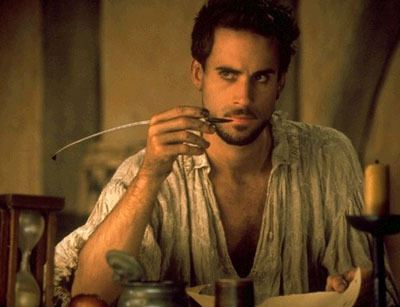 Thanks for all the encouragement last week. That's a piece I believe in and won't give up on. Hooray for love!
Thanks for all the encouragement last week. That's a piece I believe in and won't give up on. Hooray for love!I have some big news about my magnum opus, Tree/House, to announce at a later date. In preparation, take a look at this emotional scene in which a seemingly random young lady has come to the door to accuse and recriminate the master of the house.
* * *
The young woman stepped inside and looked as quickly around as her furtiveness would allow, then she took Emma by both shoulders and said firmly, "You're Professor Andrews' new wife, aren't you?""Yes," said Emma, shaken."I have to say to you, then: "'Tis not a year or two shows us a man: they are all but stomachs and we all but food. They eat us hungerly, and when they are full, they belch us!'"She released Emma just as suddenly as she had taken hold of her, and Franklin suddenly lurched out of the Shakespeare library. "Othello, act three, scene four!"
* * *Nothing like Shakespeare to add drama to your story! Thanks for visiting. I appreciate your comments immensely and if you have a blog, I will return the favor. The other exciting samples are here.
Tree/House, as always, is available here and here. And here.
Published on November 20, 2011 00:33

